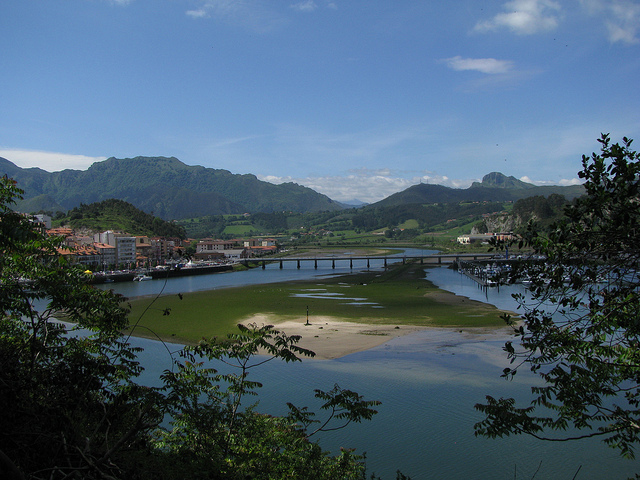On this gorgeous Tuesday morning, I had really enjoyed my local tour through Oviedo, the historic capital of Asturias, one of Spain’s northern provinces. My expert local guide Liliana Ausín had taken me through the downtown and explained all the important sights to me. On our walk downtown we had run into the festivities of La Balesquida, also called “Martes del Campo” (Tuesday in the Country) and followed a series of musical groups from the cathedral to the Campo de San Francisco Park. I had received an introduction to Asturian bowling (“bolos” — where the balls are thrown through the air), the famous spicy sausage rolls of Asturias and a “carbayon”, Oviedo’s typical almond pastry. The entire town was out celebrating on this special holiday.

The festivities at La Balesquida
In the early afternoon I headed back to my hotel, the Barcelo Oviedo Cervantes Hotel, to meet hotel employee Paula Alvarez who was going to take me on a personal tour through the hotel. This newly constructed five-star property is among the top ranked hotels in the city and was opened in 2007.

The Barcelo Oviedo Cervantes Hotel
The hotel features a variety of accommodations; Deluxe rooms for example, feature two washbasins and a jet shower while Deluxe Executive rooms have a hydro-massage bath with glass walls as well as a work area with a writing desk and a living area with a sofa. Deluxe family rooms are composed of two interconnected rooms which allow separate access to each room. Junior Suites and Suites both feature separate living areas and all rooms are equipped with flat-screen televisions, mini-bars, work desks and a safe.

Hotel room at the Barcelo Oviedo Cervantes Hotel
The décor at the Barcelo Oviedo Cervantes Hotel is based on stylish combinations of browns, beige and orange tones with neutral accents and provides an elegant calm environment. Paula explained that most of the guests currently come from Spanish cities such as Madrid, Barcelona and Bilbao. An increasing number of travelers arrive from other European countries while clients from North America are still relatively few.

The Galatea Bar
We also saw some of the 12 state-of-the art meeting rooms, fully equipped with high-tech audio-visual facilities and high-speed Internet connections, before Paula took me to the main floor that is anchored by the “La Galatea” restaurant which specializes in high quality Asturian cuisine. The main floor Galatea bar welcomes visitors with its lively pink and green lighting and provides a great view out to the street. The Lobby Bar is another comfortable place where guests come to order room service and watch TV. Many of the hotel’s guests like to gather here.

Cool seating in the Lobby Bar
After my personal tour through the hotel I briefly retreated to my room to recharge my batteries, but unfortunately my transformer shorted out. Considering how much photography and videography I do, it is absolutely vital for me to have a functioning charger for both my laptop and my camera. At 4 pm I was scheduled to meet my expert local tour guide Liliana again, this time in Gijón, the largest city of Asturias which is located about 20 minutes north of Oviedo, right on the Atlantic Ocean. It became a priority for me to find a replacement charger.

The Lobby Bar
The weather had progressively turned worse, and a very dark sky was now looming overhead. I met Liliana at our agreed meeting point and asked her for her help in finding a charger. Unfortunately, sightseeing had to wait for a while until I was able to sort out my technical issues. Liliana was eager to help and first took me to a big El Corte Inglés department store. Unfortunately they did not carry any travel transformers that would be able to convert European current for North American electrical devices.

Stylish bathroom at the Barcelo Oviedo Cervantes Hotel
But Liliana, who is a native of Gijón, really knows the area well and suggested another store, an electronics store by the name if Edimar, where I was able to buy a new functioning charger after all. Thanks to Liliana’s help this saved the day because I would now be able to download all my photos and videos again. This was a huge load off my shoulders and I was able to rededicate myself to exploring Gijón.

Beautiful Asturian architecture
Gijón is Asturias’ largest city and has been settled since early human history and was an important regional city during ancient Roman times. Its centre is built on a small peninsula that juts out into the Atlantic Ocean and the city has grown to a population of over 270,000 people. During the 20th century Gijón became a very industrial city, but following a decline in the steel and shipbuilding industries, the city changed its focus to become a centre of tourism, higher education and services.

The entrance area of the Laboral City of Culture




